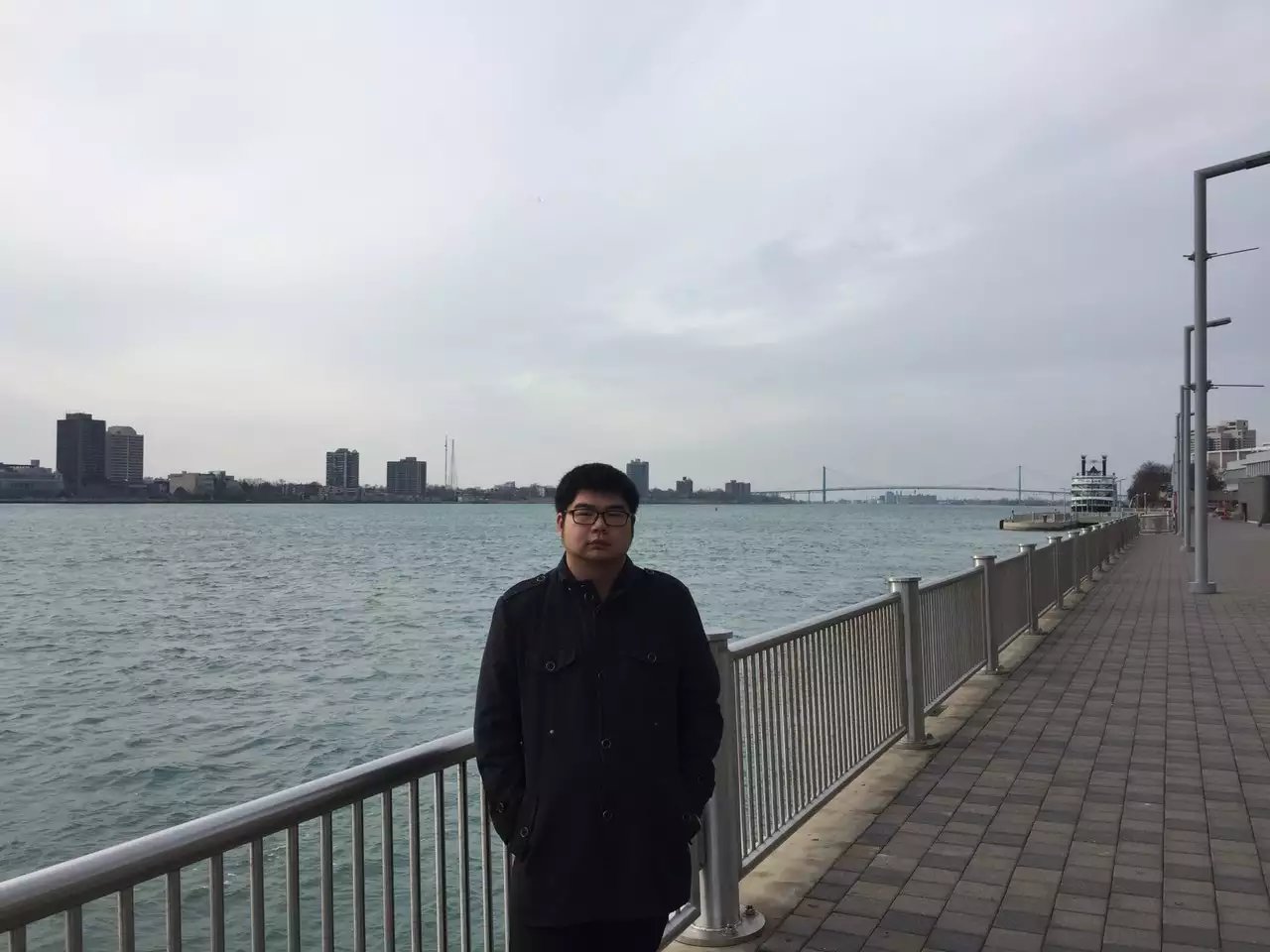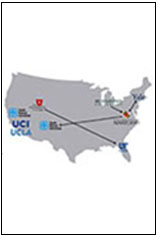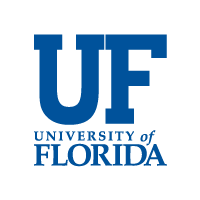EFRC NEES 2016 Collaboration Travel Grant Awards
NEES is please to announce the result of 2016 Collaboration Travel Grants applications. Based on the scientific merit of the research proposals toward NEES goals, four are awarded funding, allowing NEES students and postdocs to collaborate and conduct research at NEES-affiliated institutions. Congratulations to the following recipients and we look forward to future updates of their effort!
 "Computational & Experimental investigation on the Electrode/Electrolyte Interphase in Rechargeable Batteries" -Yuxiao Lin, who is a graduate student in Yue Qi's group at Michigan State University, plans to visit Chunsheng Wang and John Cumings at University of Maryland in the summer of 2016. An analytical model has been developed to connect the initial irreversible capacity loss on anode surface due to SEI formation with density functional theory (DFT)-predicted solid electrolyte interphase (SEI) tunneling results. He plans to use computational methods and insights to design protective coatings for Li metal electrodes - to screen a broad range of electronic insulating materials and their thickness from DFT-based electron tunneling barrier calculations. Additional research on Li-S battery nanostructure design and mechanism of the reactivation processes of Mg polysulfide are also in the works. "Computational & Experimental investigation on the Electrode/Electrolyte Interphase in Rechargeable Batteries" -Yuxiao Lin, who is a graduate student in Yue Qi's group at Michigan State University, plans to visit Chunsheng Wang and John Cumings at University of Maryland in the summer of 2016. An analytical model has been developed to connect the initial irreversible capacity loss on anode surface due to SEI formation with density functional theory (DFT)-predicted solid electrolyte interphase (SEI) tunneling results. He plans to use computational methods and insights to design protective coatings for Li metal electrodes - to screen a broad range of electronic insulating materials and their thickness from DFT-based electron tunneling barrier calculations. Additional research on Li-S battery nanostructure design and mechanism of the reactivation processes of Mg polysulfide are also in the works.
  "Synergy between Nanofluidic Devices & ALD to Study Ionics near Battery Electrode Surface under Nanoconfinement" - "Synergy between Nanofluidic Devices & ALD to Study Ionics near Battery Electrode Surface under Nanoconfinement" -
Sylvia Xin Li (Mark Reed's group, Yale) & Chanyuan Liu (Gary Rubloff's group, UMD) are planning for reverse visits in the summer of 2016, to continue the collaboration between the two laboratories. Ion transport within nanoconfined electrolyte between interfaces of electrolyte/active storage material is essential for understanding the underlying science at/near the battery electrode surface. Utilizing atomic layer deposition (ALD) for well-controlled surface properties at the solid/fluid interface, nanofluidic devices can serve as an effective platform to explore a broad range of different electrode materials, opening up new opportunities for quantitative understanding the physics of highly confined ionic systems.
 "Detailed Theoretical Description of the Ion Transport and Electrokinetic Phenomena Observed in Nanoporous Membranes" - Martin Edwards, a postdoctoral researcher in Henry White's group at University of Utah, will be visiting Charles Martin’s laboratory at University of Florida in the fall of 2016. They will develop a theoretical description of a conical nanoporous membrane that predicts the flow and pressure response of the experimental measurement, e.g. electroosmotic flow (EOF) rectification and AC-EOF, as a way to initiate a long-term collaboration focusing on the electric field effects on ionic solutions. "Detailed Theoretical Description of the Ion Transport and Electrokinetic Phenomena Observed in Nanoporous Membranes" - Martin Edwards, a postdoctoral researcher in Henry White's group at University of Utah, will be visiting Charles Martin’s laboratory at University of Florida in the fall of 2016. They will develop a theoretical description of a conical nanoporous membrane that predicts the flow and pressure response of the experimental measurement, e.g. electroosmotic flow (EOF) rectification and AC-EOF, as a way to initiate a long-term collaboration focusing on the electric field effects on ionic solutions.
 "Sealed Liquid Cell Capability for Investigating Mg+2 Insertion/Deinsertion in MnO2 Cathodes" - Zoey Warecki, a graduate student in John Cumings' group at UMD, will visit Katie Jungjohann at Sandia NL, Albuquerque, NM, in the winter of 2016. They are interested in bringing Sandia’s electrochemical liquid cell platform to UMD as part of our NEES collaboration, a capability that can open the door to studying volatile liquid electrolytes inside the transmission electron microscope (TEM). In particular, the in-situ TEM experiments complement the I-V characteristic curves obtained from coin cell, and can provide direct correlation of the structure-property relationship during electrochemical cycling. Application to insertion/deinsertion of Mg2+ ions in the MnO2 cathodes in real time observation can offer new insights to battery degradation. "Sealed Liquid Cell Capability for Investigating Mg+2 Insertion/Deinsertion in MnO2 Cathodes" - Zoey Warecki, a graduate student in John Cumings' group at UMD, will visit Katie Jungjohann at Sandia NL, Albuquerque, NM, in the winter of 2016. They are interested in bringing Sandia’s electrochemical liquid cell platform to UMD as part of our NEES collaboration, a capability that can open the door to studying volatile liquid electrolytes inside the transmission electron microscope (TEM). In particular, the in-situ TEM experiments complement the I-V characteristic curves obtained from coin cell, and can provide direct correlation of the structure-property relationship during electrochemical cycling. Application to insertion/deinsertion of Mg2+ ions in the MnO2 cathodes in real time observation can offer new insights to battery degradation.
elizabeth lathrop
EFRC NEES
May 8, 2016
Prev
Next |
|




 "Computational & Experimental investigation on the Electrode/Electrolyte Interphase in Rechargeable Batteries" -
"Computational & Experimental investigation on the Electrode/Electrolyte Interphase in Rechargeable Batteries" -
 "Synergy between Nanofluidic Devices & ALD to Study Ionics near Battery Electrode Surface under Nanoconfinement" -
"Synergy between Nanofluidic Devices & ALD to Study Ionics near Battery Electrode Surface under Nanoconfinement" -  "Detailed Theoretical Description of the Ion Transport and Electrokinetic Phenomena Observed in Nanoporous Membranes" - Martin Edwards,
"Detailed Theoretical Description of the Ion Transport and Electrokinetic Phenomena Observed in Nanoporous Membranes" - Martin Edwards,  "Sealed Liquid Cell Capability for Investigating Mg+2 Insertion/Deinsertion in MnO2 Cathodes" - Zoey Warecki,
"Sealed Liquid Cell Capability for Investigating Mg+2 Insertion/Deinsertion in MnO2 Cathodes" - Zoey Warecki, 







